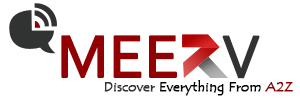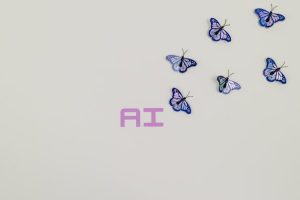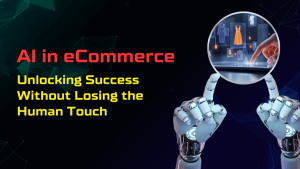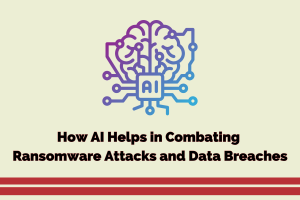Best AI Frameworks for Python in 2025: A Complete Guide

If you are developing something with AI these days, a clever chatbot, a voice assistant, or something that adapts to users’ behavior, you are likely working with Python. Why? Thanks to its simplicity, rich ecosystem of libraries, and a highly active global developer community, Python has become the go-to language for AI development.
The artificial intelligence field is developing quickly than ever now in 2025. From small startups building AI copilots to large companies automating entire workflows, everyone’s trying to move fast and stay ahead. Whether you’re building in-house or looking for AI developers for hire to scale your team faster, picking the right foundation matters more than ever.
I’ve faced that same confusion. In my early days, I often picked the first library I found, only to realize later it didn’t fit my needs. Choosing the right framework early on saves time, avoids frustration, and helps you build smarter, more scalable solutions.
That’s where this guide comes in.
In this post, I’ll walk you through the best AI frameworks for Python in 2025, what each one does best, when to use them, and how they compare. Whether you’re just getting started or running AI models in production, this guide will help you pick the right tool with confidence.
Why Python is the Top Choice for AI
Python is readable and writable, which simplifies the process for developers to create and test AI models more quickly. It also has:
- A wide range of libraries and modules for data and machine learning, deep learning, and data science.
- A dynamic and strong network dedicated to improvement and support.
- Seamless integration with cloud platforms, mobile operating systems, and deployment tools.
Python is becoming increasingly popular in machine learning and data science, and thus it makes a wonderful option for artificial intelligence. Whether you are training models, examining data, or rolling out apps, Python has the right tools to assist you.
Best AI Frameworks for Python in 2025
There are a lot of frameworks in 2025, but among them are the most frequently used and reliable ones. All frameworks have distinct needs, and we are here to assist you in finding the perfect one for you.
1. PyTorch
PyTorch is widely used by developers and researchers. It is simple and versatile. It enables you to prototype ideas rapidly and is best suited for creating new models from scratch.
What’s new in 2025:
- Improved performance on multiple GPUs.
- Support for mobile and edge AI with TorchServe.
- Integration with OpenAI, Hugging Face, and a few other well-known libraries.
Great for: Research, natural language processing (NLP), computer vision, and deep learning.
It’s ideal for anyone who wants full control and flexibility in their AI models.
2. TensorFlow
TensorFlow is an open-source AI platform that was developed by Google. Large entities use it to host AI models at a huge scale.
What’s new in 2025:
- TensorFlow Lite is now more efficient for mobile and IoT apps.
- Keras 3.0 offers a simpler, faster way to build models.
- Enhanced support for streaming data and real-time AI apps.
Great for: Large apps, mobile deployment, enterprise-grade AI.
It’s a smart choice if you’re building AI products that need to scale to millions of users.
3. Hugging Face Transformers
Hugging Face is the go-to utility for NLP tasks like text generation, translation, and question answering. It offers thousands of pre-trained models that one can use.
What’s new in 2025:
- Multimodal support: Models that handle text, images, and audio together.
- Faster deployment with hosted inference API.
- Deeper integration with PyTorch, TensorFlow, and JAX.
Great for: Chatbots, content generation, text classification, and summarization.
This is the best pick if you’re working with AI that understands or generates human language.
4. JAX
JAX is extremely quick and is utilized by top AI research groups such as DeepMind. It is excellent to create complex models and run big calculations.
What’s new in 2025:
- Optimized for GPU and TPU performance.
- Simplifies writing high-speed functions with minimal code.
- Works well with NumPy and automatic differentiation.
Great for: Research, large-scale models, mathematical computing.
Pick JAX if performance and speed are your top priorities.
5. Scikit-learn
Scikit-learn would be more suited for small-scale, traditional ML projects like predictions and classifications. It is extremely easy to use and beginner-friendly.
What’s new in 2025:
- Backend upgrades for better performance.
- Improved tools for model explanation and visualization.
Great for: Regression, classification, clustering, and small to mid-sized data projects.
If you’re new to machine learning or working on simpler models, this is a great place to start.
6. Fastai
Fastai is built on top of PyTorch and seeks to remove the complexity from deep learning. It hides much of the complexity so you can build and test models quickly.
What’s new in 2025:
- Better support for tabular data and vision transformers.
- Updated APIs for faster development.
Great for: Learning AI, rapid prototyping, proof of concept projects.
If you want to get results fast without learning every low-level detail, Fastai is the way to go.
Quick Comparison: Python AI Frameworks
| Framework | Best For | What’s New in 2025 |
| PyTorch | Research, deep learning | Faster on GPUs, TorchServe, better integrations |
| TensorFlow | Production & scaling | TF Lite, Keras 3.0, real-time pipelines |
| Hugging Face | Language models (NLP) | Multimodal AI, hosted API |
| JAX | Speed, high-performance | GPU/TPU boost, easier coding |
| Scikit-learn | Simple ML tasks | Performance updates, better explainability |
| Fastai | Beginners & quick builds | Simplified APIs, new model support |
How to Pick the Right Framework
Choosing the right AI framework depends on:
- Project size: Are you building a small model or a large AI system?
- Type of data: Are you working with text, images, numbers, or something else?
- Skill level: Are you just starting or experienced in AI?
- Deployment requirements: Will your application run on the web, on mobile devices, or in the cloud?
Also, consider your team’s skills and your project deadline. Choosing the right framework early can save you weeks of development time.
Beginner? Start with Fastai or Scikit-learn.
Doing research? Try PyTorch or JAX.
Going to production? Use TensorFlow.
Working with text or language? Go with Hugging Face Transformers.
With many frameworks available, it’s easy to feel overwhelmed. That’s why we’ve broken it down—so you can choose the one that matches your goals without wasting time.
Final Thoughts
There’s no one-size-fits-all framework. Each tool has its strengths. The best one depends on what you’re trying to build and how you want to use it.
Remember, tools are just one part of the AI puzzle. A good understanding of your problem and data is just as important as picking the right framework.
Python makes working with AI easier. These frameworks help you do more, faster, and 2025 is a great time to start or level up your AI journey.
Whether you’re a beginner or scaling an AI system for thousands of users, there’s a tool here to fit your needs.






